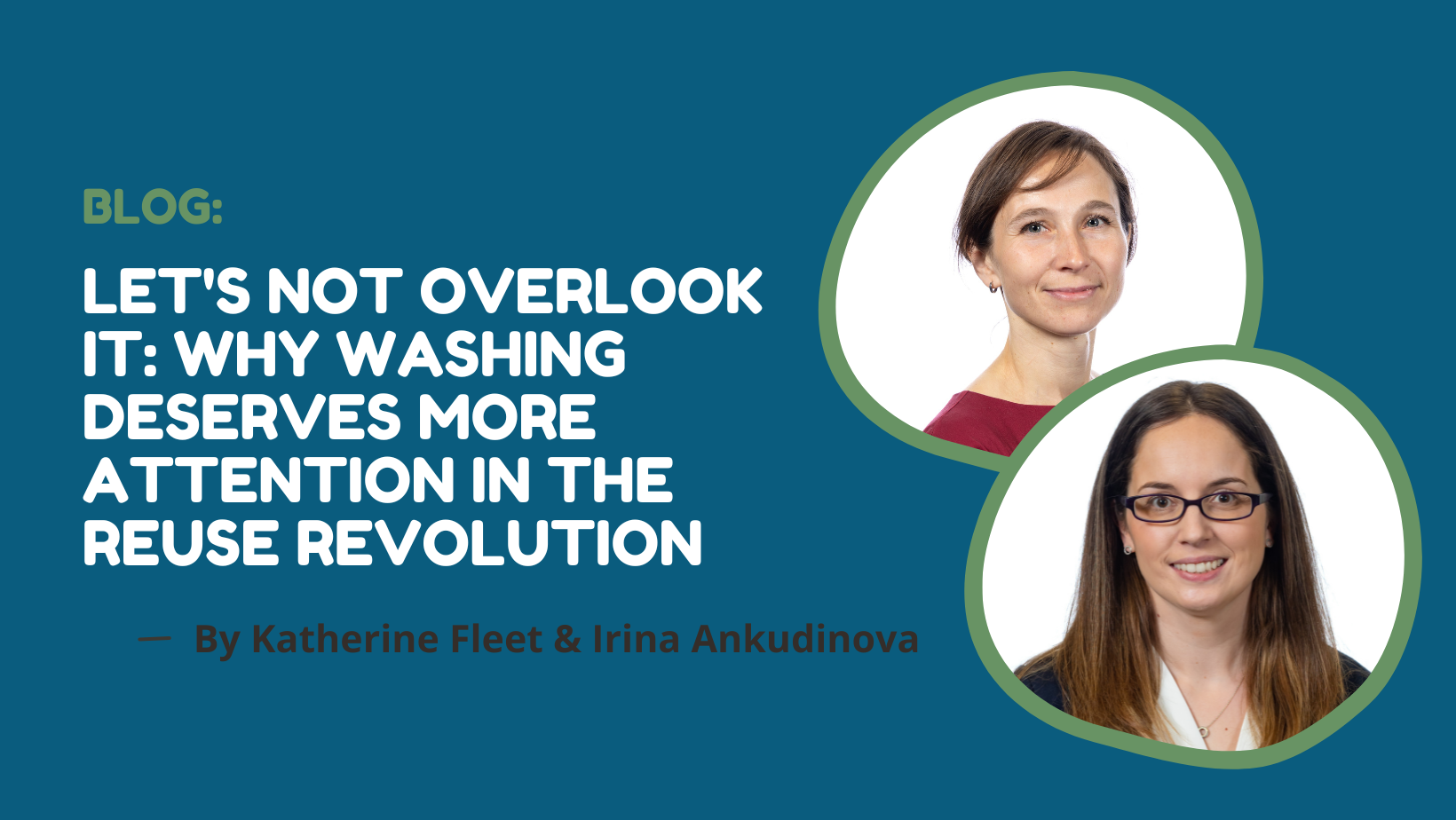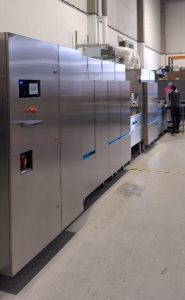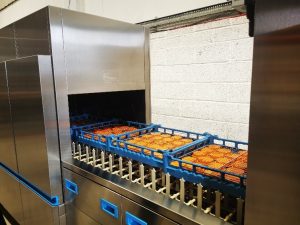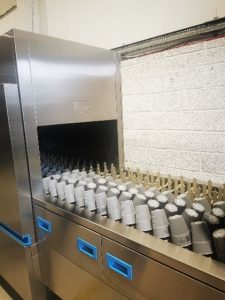Let’s Not Overlook It: Why Washing Deserves More Attention In The Reuse Revolution

While RECOUP have been working on and researching the topic of reuse for a couple of years now, it wasn’t until recently that we visited a reusable packaging washing facility to see for ourselves how this phase of the reuse system operates. I think it’s safe to say that we both left with a whole new appreciation for the role that cleaning and washing plays in a reusable packaging system!
Before our visit to Blue Planet Washing Solutions, we were both expecting to turn up to see a larger version of a domestic dishwasher.
And it was a large dishwasher, however, a very different one to what is in your kitchen!
The machine itself was a long industrial appliance approximately 20 metres long, specifically designed for servicing reusable plastic packaging to maximise the efficiencies, guarantee a thorough and standardised wash process, and take into the consideration the material properties.
On the day we visited, cups and lids were being put through the machine for washing. The inventory of reusable packaging items to be cleaned are loaded into trays if they are smaller items such as cup lids, and secured with metal nets, which hold items in place throughout the process. Larger, heavier items, such as cups can be placed directly onto pegs on the conveyor belt and fed into the machine. The conveyor belt system allows the washing to continue while the inventory of dirty and clean items are put into or removed from the washing process meaning it’s one continuous process line!


As they move along the conveyor belt, the items going through the wash process follow a three-stage cleaning process. The dosage of wash detergents and rinse aid is adjusted to the local water hardness to achieve the best results. During the main wash stage, items are agitated to allow all the surface contamination to be removed.
The machine had an extended last section to remove moisture and completely dry the washed items before they are inspected and packed for the next reuse cycle. The drying section is especially important for reusable plastic packaging, requiring additional drying time compared to other materials. Once through the drying process the packaging is ready for reuse! Visual quality checks ensure cleanliness, further quality checks and tests are tailored to individual reusable packaging provider needs, packaging types and products.
The cleaning process achieves its maximum environmental and commercial efficiencies when the washing system works at full capacity. Impressively the machine we saw can wash up to 10,000 items per hour and be on 24/7 if needed, with some scheduled maintenance breaks.
The use of reusable packaging is growing, particularly reusable plastic packaging. The BPF forecast that by 2035 the adoption of reusable plastic products, including packaging, will significantly increase, representing up to 13% of plastic waste flows[1]. We are seeing more and more reuse systems utilising plastic coming to market. For example, this year Abel & Cole launched their award winning (a RECOUP Award being one of those!) Club Zero refillable milk bottle. This system uses a bottle made from polypropylene (PP) that allows for multiple refills and is also recyclable, when the time comes. Customers return the bottles to Abel & Cole for washing once used; by reusing these bottles just 4 times it cuts the carbon footprint of single-use plastic milk bottles in half[2].
Another example that has recently come to market, that is also part of a reuse return system, is the Ocado pilot of online reusable packaging[3]. The system utilises a plastic container that is pre-filled with product, designed to deliver food cupboard staples and laundry products to customers. When they are empty, the containers are returned to Ocado delivery staff for their next delivery.
What both of these examples have in common is the need for the packaging to be washed once it is returned, to refill it and return it to the system for its next use. A lot of focus has been given to the introduction of, and trial of, reusable packaging at the point of sale, but sometimes we forget that without appropriate washing infrastructure, the whole system would collapse. Washing is a crucial step in any reuse model ensuring that products are safe to reuse, maintaining hygiene standards and extending the life of packaging.
There is a lot of innovation already happening in the process, alongside multiple calls for further development of the washing process. A standardised and certified washing protocol that can help all washing facilities align and provide top-quality results, is yet to be developed. Standardisation of the packaging items will also help increase the process efficiency and create a foundation for automating inventory, loading, and packaging clean items for further reuse. Incorporation of technologies based on AI, RFID, QR codes, etc, can enhance systems with real time data and provide solutions for allergen control, quality assurance, tamper evidence and consumer communications.
So, next time you use reusable packaging that is going back into a reuse system, take a moment to appreciate the cleaning process that made it possible and the ongoing developments that are happening to improve reuse systems. Without washing, the cycle of reuse would simply not work!
Read more about RECOUP’s work on reuse here: RECOUP | Reuse
[3] Ocado first to pilot online reusable packaging scheme | News | The Grocer